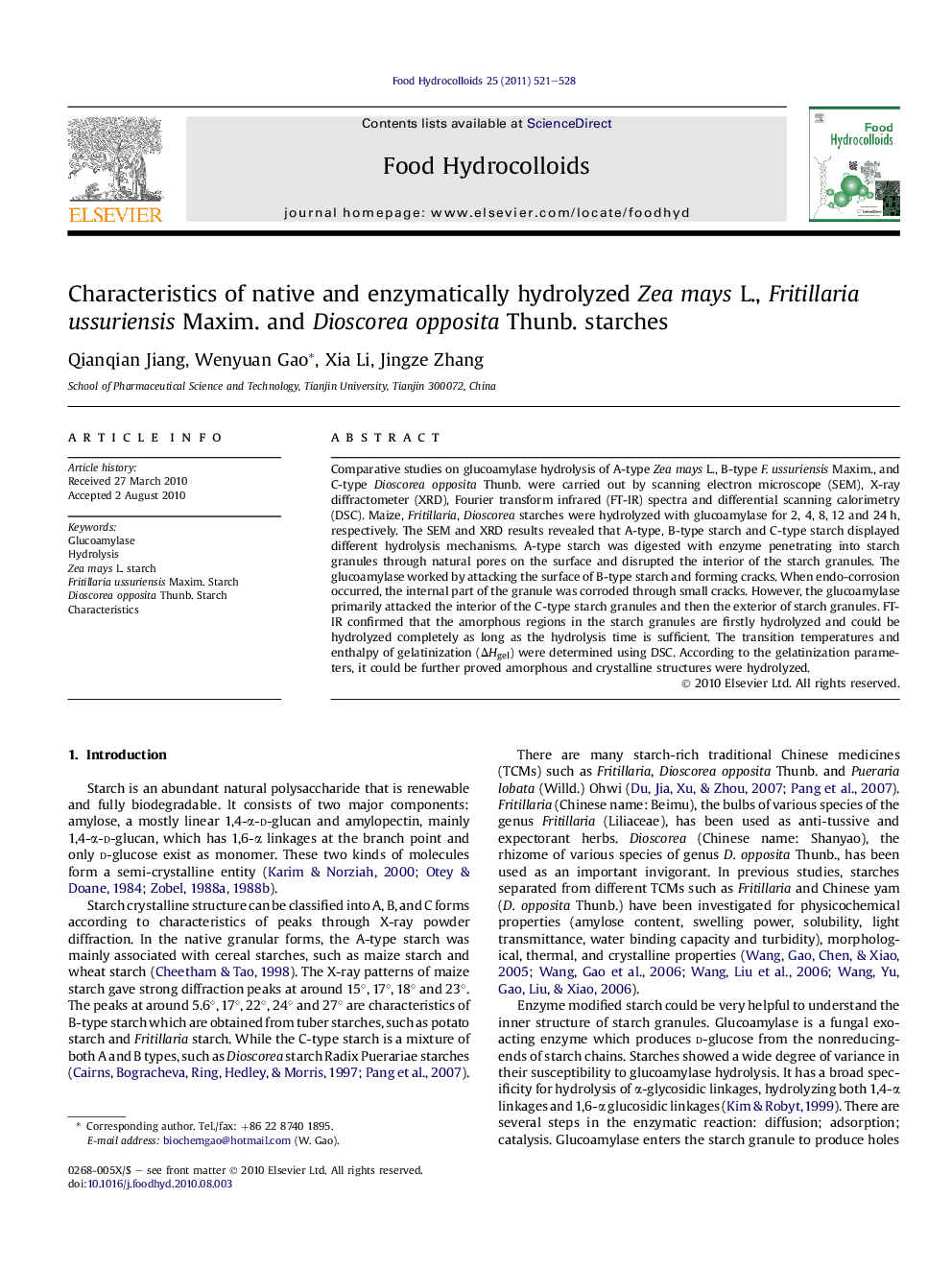| Article ID | Journal | Published Year | Pages | File Type |
|---|---|---|---|---|
| 604482 | Food Hydrocolloids | 2011 | 8 Pages |
Comparative studies on glucoamylase hydrolysis of A-type Zea mays L., B-type F. ussuriensis Maxim., and C-type Dioscorea opposita Thunb. were carried out by scanning electron microscope (SEM), X-ray diffractometer (XRD), Fourier transform infrared (FT-IR) spectra and differential scanning calorimetry (DSC). Maize, Fritillaria, Dioscorea starches were hydrolyzed with glucoamylase for 2, 4, 8, 12 and 24 h, respectively. The SEM and XRD results revealed that A-type, B-type starch and C-type starch displayed different hydrolysis mechanisms. A-type starch was digested with enzyme penetrating into starch granules through natural pores on the surface and disrupted the interior of the starch granules. The glucoamylase worked by attacking the surface of B-type starch and forming cracks. When endo-corrosion occurred, the internal part of the granule was corroded through small cracks. However, the glucoamylase primarily attacked the interior of the C-type starch granules and then the exterior of starch granules. FT-IR confirmed that the amorphous regions in the starch granules are firstly hydrolyzed and could be hydrolyzed completely as long as the hydrolysis time is sufficient. The transition temperatures and enthalpy of gelatinization (ΔHgel) were determined using DSC. According to the gelatinization parameters, it could be further proved amorphous and crystalline structures were hydrolyzed.
Graphical abstractFigure optionsDownload full-size imageDownload as PowerPoint slide
